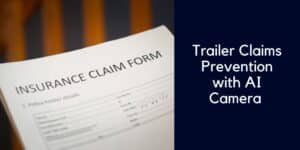A Never Event – what exactly is it?
A ‘Never Event’ in the healthcare industry was first introduced in 2001 by Ken Kizer. The term ‘never event’ is used when a disquieting and shocking medical error occurs that may cause serious damage to patient safety and in some cases, death. There are 7 categories of Never Events: surgical or procedural events, product or device events, patient protection events, care management events, environmental events, radiologic events, and criminal events.
What is the difference between a Never Event vs a sentinel event?

Sentinel event vs never event – what’s the difference? A Never Event is a medical error that is clear to identify and prevent but the consequences can be serious to a patient’s health. On the other hand, a sentinel event is an event that in most cases starts as a Never Event but leads to a patient’s death, permanent harm, or several temporary harms.
What are product events or device events?
Product events or device events occur when a patient’s death or serious injury is linked to the use or function of certain implants, drugs, devices, or biologics provided by the hospital or the healthcare provider, or in which the device is used for functions other than as intended. In addition, patient death or serious injury that are associated with intravascular air embolism that occurs while being cared for in a healthcare setting.
Why are `Never Events` publicly reported?
Healthcare providers are accountable for correcting those fatal problems that contributed to the event. Never Events are being publicly reported, to increase accountability and improve the quality of safety care. Although there is still a long way to go, some states have mandated reporting of these incidents whenever they occur.
Hospitals around the world are following tight safety protocols to prevent Never Events, starting with preventable product events. Even though medical items are checked before the procedure/surgery, there are still cases in which expired products are only discovered after or during the surgery. There are many reasons why this may happen, some of them related to the stressful environment of operating and procedural rooms and the human factor dependency. And some related to poor data-capture solutions that are failing to address those issues.
To avoid Never Events, hospitals seek a solution that will help them support the clinical teams in preventing future cases and improve their existing inventory management system capabilities.
How do hospitals and medical centers avoid Never Events?

In order to prevent Never Events, hospitals and medical centers have to establish a few safety steps:
- Establish safe practices and a safety protocol that are achievable and that the medical staff can follow.
- Identify and prevent risk ahead: keep providers and staff informed and involved in real-time risk mitigation. And when Never Events do happen, an investigation will be conducted for the purpose of understanding what went wrong and taking steps to prevent future incidents.
- Educate staff: train all staff members for possible scenarios and explain what they should do in order to avoid possible Never Events.
- Invest in creating a durable last line of defense: equip the clinical teams with automated devices designed to detect expired or recalled products.
- Document every item used in patient’s file: To avoid cases such as the Allergan breast implant recall in which batch history was missing, all product information must be recorded and tracked electronically and associated with the specific procedure.

Snap & Go image recognition sensor is an easy device for relevant data capture in the OR and procedural rooms. In a single snap, it verifies product integrity, expiration date and recall batch, and documents all pertinent information: expiration date, lot, SKU and serial number in the patient’s chart. Automatic alerts of recall and expiration dates help prevent mistakes that could harm a patient, during the surgery and in the future.






